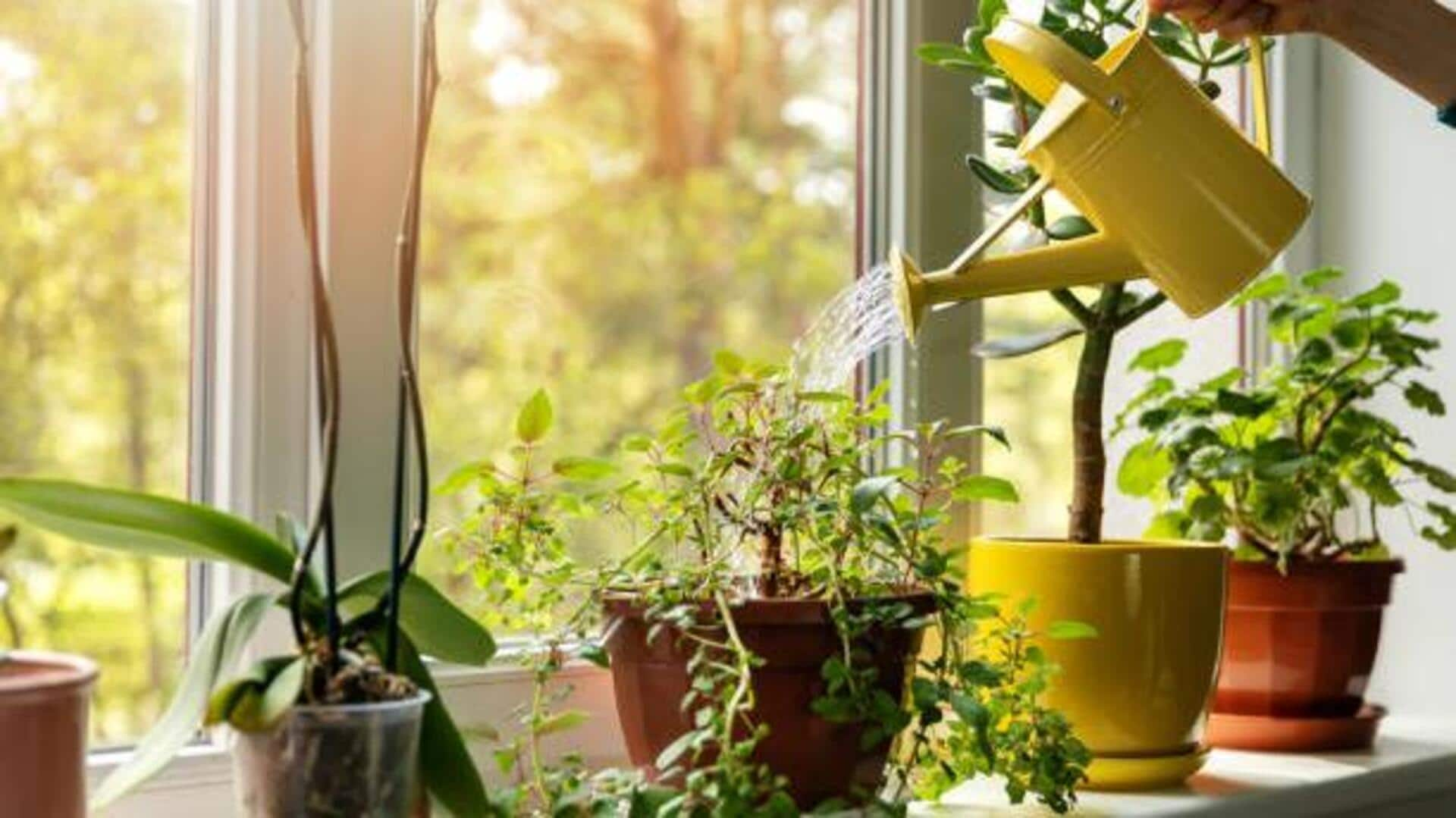
How to water indoor plants the right way
What's the story
Watering indoor plants the right way is essential for their health and growth. Different types of plants require different amounts of water, and knowing these can make all the difference in keeping your indoor greenery alive and kicking. Here, we look at effective watering methods for specific indoor plant types, ensuring that none of them are overwatered or underwatered.
Succulents
Understanding succulent needs
Succulents are famous for their water-storing capacity, which makes them drought-resistant. They need to be watered infrequently, mostly once every two weeks. It is important to let the soil dry out completely between two waterings to avoid root rot. Using a well-draining potting mix and pots with drainage holes can also help maintain the right amount of moisture for succulents.
Ferns
Caring for ferns
Ferns love consistently moist environments, but not soggy ones. They prefer indirect light and humid conditions. Water ferns when the top inch of soil feels dry to touch; usually, once a week. Misting ferns regularly can help maintain humidity around them, mimicking their natural habitat and promoting healthy growth.
Tropical plants
Nurturing tropical plants
Tropical plants such as peace lilies and philodendrons thrive in warm temperatures and high humidity. These plants should be watered when the top inch of soil is dry, usually once every week or ten days. Good drainage is important as tropical plants cannot withstand standing water. Grouping tropical plants together can also help raise humidity levels naturally.
Cacti
Managing cacti hydration
Cacti are desert plants and thus require very little watering than any other indoor plants. During active growth seasons in spring and summer, you should water your cacti every two weeks or when the soil has dried out completely from the last watering. In winters, reduce the watering frequency significantly as the cacti enter dormancy during this period.
Orchids
Tending to orchids
Orchids have unique watering needs because they're epiphytic; they grow on other surfaces instead of directly in soil in their natural habitats. Water orchids thoroughly but infrequently, typically once a week, allowing excess water to drain completely after each session. This prevents the roots from sitting in moisture, which can lead to rot over time if not properly managed.